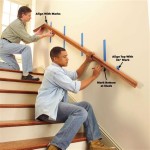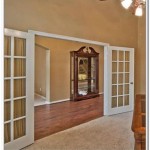Hinge Locations On Interior Doors: Essential Aspects To Consider
The placement of hinges on interior doors is a crucial aspect that can significantly impact the functionality, aesthetics, and overall safety of your home. While choosing hinge locations may seem like a simple task, there are several essential factors to consider to ensure optimal door performance and longevity.
Door Weight and Size: The weight and size of the door play a vital role in determining hinge placement. Heavier doors require more hinges to support their weight and prevent sagging. Similarly, larger doors need more hinges to maintain proper alignment and reduce stress on the door frame.
Door Swing Direction: The direction in which the door swings (inward or outward) determines the hinge location. For inward-swinging doors, the hinges are typically placed on the side of the door that faces the room. For outward-swinging doors, the hinges are positioned on the exterior side of the door.
Door Clearance: Adequate clearance between the door and the surrounding frame is essential for smooth opening and closing. Hinge placement should allow for sufficient clearance to prevent the door from scraping against the frame or other objects.
Wall Thickness: The thickness of the wall where the door is installed can influence hinge placement. Standard hinges require a minimum wall thickness, and thicker walls may necessitate the use of longer screws or special hinges.
Door Style: The decorative style of the door can also affect hinge location. Certain door styles, such as French doors or bifold doors, require specific hinge placements to accommodate their unique construction.
Architectural Considerations: In some cases, architectural features or building codes may dictate specific hinge locations. For example, in fire-rated doors, hinges must be positioned to maintain the door's fire resistance rating.
Professional Installation: While it is possible to install hinges yourself, it is highly recommended to hire a professional for optimal results. An experienced door installer can ensure proper hinge placement, ensuring the door operates smoothly and lasts for years to come.
By carefully considering these essential aspects, you can determine the optimal hinge locations for your interior doors, ensuring both functionality and aesthetic appeal. Proper hinge placement will not only enhance the usability of your doors but also contribute to the overall safety and comfort of your home.

Hinge Location Chart Doors Unlimited Commercial

Hinge Placement Rules And Traditions

Anatomy Of A Swinging Interior Door Unit Reeb Learning Center

Interior Hinges Teem Whole Custom Doors And Millwork

Hinge Placement Rules And Traditions

Commercial 18 Gauge 4 0 X 6 8 Flush 1 3 Fire Rated Steel Door Polystyrene Core

Interior Door Slab Measuring Guide

Hinge Adjustment For A Door S Final Fit Fine Homebuilding

What Is The Difference Between Interior And Exterior Door Hinges Danddhardware

Tips For Hanging Doors From A Veteran Carpenter Diy Family Handyman
Related Posts








